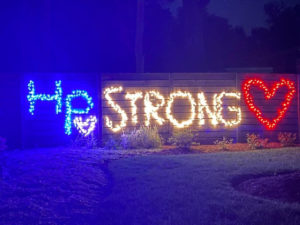 When something traumatic happens, it can be challenging to meet children and teens where they are emotionally and help them sort through their wide-ranging and often confusing emotions.
When something traumatic happens, it can be challenging to meet children and teens where they are emotionally and help them sort through their wide-ranging and often confusing emotions.
- Connect with your child by first asking what they know and how they feel about it.
- Reassure them that you will openly accept their feelings and that it’s ok to feel many different emotions at once.
- Encourage your child to write or draw their feelings, which may be easier for a young child or a teen who has a hard time expressing how they feel.
- Model self-care to your child by setting routines (which can be healing), limiting news and social media exposure, and engaging in healthy coping activities that bring joy, like a family dance party, a bike ride or a movie night.
- Help your child see the good by encouraging activities that support coming together as a community, like writing thank you notes to those who’ve helped or selling their own unique item(s) and donating proceeds to help the victims and their families.
Sources: NorthShore University Health System, SAMHSA
It’s not one 60-minute conversation.
It’s 60 one-minute conversations.